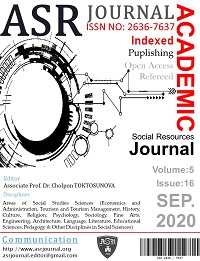Author :
Abstract
Doğal, kültürel, tarihi ve arkeolojik açıdan özgün karaktere sahip yerleşmeleri ve sit alanlarını kapsayan geleneksel yerleşim dokularının fiziksel çevreleri, sosyal, kültürel, ekonomik, politik bileşenleri kent kimliğine farklı boyutlarda nitelikler kazandırmaktadır. Yerleşim tarihi, tarih öncesi dönemlerden bugüne kadar ulaşan Harput, çok sayıda kültürel miras alanlarını bünyesinde barındırması nedeni ile önemli bir yerleşimdir. Araştırma kapsamında, Harput’un doğal ve kültürel peyzaj özelliklerinin tanıtılması ve korunmasına yönelik sorun ve olanaklar irdelenerek, ekomüze kapsamında değerlendirilmesi hedeflenmiştir. Bu amaçla, kültürel peyzajlar ve korunmasına yönelik ulusal ve uluslararası yaklaşımlar irdelenmiş ve Harput’un ekomüze potansiyelinin belirlenmesi amacı ile GZOT Analizi yöneminden yararlanılarak, alanın içsel faktörleri/güçlü ve zayıf yönler ve dışsal faktörleri/fırsatlar ve tehditler saptanmıştır. Çalışma alanı için gerçekleştirilen GZOT analizin çıktıları dikkate alınarak, Harput geleneksel yerleşim dokusu için kentsel tasarım projesi hazırlanmış, Harput Ekomüzesi’nin hedefleri vurgulanmış ve koruma önerileri geliştirilmiştir.
Keywords
Abstract
The physical environment, social, cultural, economic and political components of the traditional settlement textures, which include settlements and sites with unique natural, cultural, historical and archaeological characteristics, add qualities of different dimensions to the urban identity. Harput, whose settlement history has reached the present from prehistoric times, is an important settlement due to the fact that it contains many cultural heritage sites. Within the scope of the research, it was aimed to evaluate the problems and possibilities for the introduction and protection of the natural and cultural landscape characteristics of Harput within the scope of the eco-museum. For this purpose, national and international approaches to cultural landscapes and their conservation were examined and by using the SWOT Analysis method in order to determine the eco-museum potential of Harput, the internal factors / strengths and weaknesses and external factors / opportunities and threats of the area were determined. Considering the outputs of the SWOT analysis carried out for the study area, an urban design project was prepared for the traditional settlement texture of Harput, the goals of the Harput Eco-Museum were emphasized and conservation proposals were developed.
